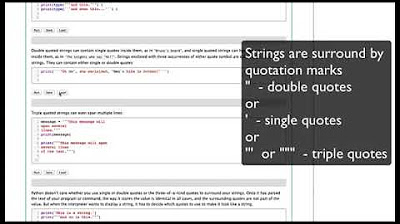[제품협찬] 첼로 줄 교체해봤어요! (줄 바꿀때 팁!) feat. Larsen Il Cannone | 첼로댁 클래스 CelloDeck Class
Summary
TLDRIn this video, the creator demonstrates how to change cello strings, discussing the different types of strings and the importance of proper maintenance. They introduce a new string brand called 'Igne', which they try for the first time, comparing it to their usual 'Larsen' strings. The video also highlights tips for string installation and care, including warming up the strings and using a cloth to clean them. After installing the new strings, the creator reviews the sound, expressing satisfaction with the improved tone and resonance. The video ends with a note about future updates on the string's performance.
Takeaways
- 😀 Changing cello strings is an essential part of instrument maintenance, typically done once a year or when performance starts to deteriorate.
- 🎶 The speaker is reviewing a new cello string brand called 'Irken,' which they are trying for the first time, in comparison to their usual brand, 'Larsen.'
- 🔧 The process of changing strings should be done one at a time to avoid damaging the bridge or causing other issues.
- 🎻 The new 'Irken' strings are described as offering a significantly different sound compared to 'Larsen,' with a richer, fuller tone.
- 🎚️ Sound improvement is a key focus, with the new strings providing greater resonance and volume compared to the old ones.
- 🧼 Proper string maintenance, such as warming them up with a cloth and applying polymer solutions, is essential for optimal performance.
- 🔨 The speaker uses a specific method to ensure smooth movement of the strings over the nut and bridge, using graphite to reduce friction.
- 🔄 The experiment involves replacing just the C string first to test the 'Irken' sound, followed by the G and D strings if satisfied with the results.
- 🌟 The sound quality after changing strings is notably improved, with clearer highs and a fuller, richer overall tone.
- 📈 After trying the new strings, the speaker expresses satisfaction with the improved sound, describing it as noticeably stronger and fuller than before.
Q & A
What is the main purpose of the video?
-The video primarily demonstrates how to replace cello strings, focusing on the process of switching from the user's usual Larsen strings to a new set of strings called 'Ilkegnom.' The video also reviews the changes in sound and performance after the switch.
Why is the speaker switching to a new set of strings?
-The speaker is replacing their cello strings because it is the right time to change them. They are also testing out a new set of strings ('Ilkegnom') as a part of a review, provided by a sponsor.
How often should cello strings be replaced?
-Typically, cello strings should be replaced once a year, although some musicians may replace them more or less frequently depending on their playing habits. For those who do not practice or perform regularly, strings might last several years.
What is unique about the 'Ilkegnom' strings?
-The 'Ilkegnom' strings are described as being different from other cello strings because they are said to affect not only the string being replaced but also the surrounding strings. This characteristic is noted as a key selling point in the product's marketing.
What does the speaker think of the sound after installing the new strings?
-The speaker is very pleased with the sound after installing the 'Ilkegnom' strings. They mention that the sound quality improved significantly, describing the sound as fuller and richer with more resonance, particularly with a larger volume and brighter tone.
What are some tips for handling strings after installation?
-The speaker advises warming up the new strings by cleaning them with a cloth soaked in polymer solution. This helps to avoid the strings feeling stiff or 'sticky.' They also suggest lightly applying graphite to the nut to ensure smoother string movement.
What does the speaker recommend for avoiding string damage during installation?
-The speaker emphasizes that strings should be installed one by one to avoid putting too much pressure on the bridge, which could cause it to shift or damage the cello.
How does the speaker address the potential challenges with the new strings?
-The speaker acknowledges that it can take some time for the new strings to settle in and reach optimal sound quality. They also mention the possibility of needing further adjustments after playing the cello with the new strings for a few days.
What does the speaker recommend if the new string combination doesn’t sound good?
-If the new string combination doesn’t produce the desired sound, the speaker recommends trying different combinations, such as using a different 'Ilkegnom' string set, or visiting a music store for advice and further adjustments.
What maintenance tip does the speaker offer for cello players?
-The speaker offers the tip of regularly cleaning the cello strings with a cloth to remove grime and residue, which can affect the tone and performance of the strings. They mention that using a cloth that’s slightly damp with a polymer solution is ideal.
Outlines

Dieser Bereich ist nur für Premium-Benutzer verfügbar. Bitte führen Sie ein Upgrade durch, um auf diesen Abschnitt zuzugreifen.
Upgrade durchführenMindmap

Dieser Bereich ist nur für Premium-Benutzer verfügbar. Bitte führen Sie ein Upgrade durch, um auf diesen Abschnitt zuzugreifen.
Upgrade durchführenKeywords

Dieser Bereich ist nur für Premium-Benutzer verfügbar. Bitte führen Sie ein Upgrade durch, um auf diesen Abschnitt zuzugreifen.
Upgrade durchführenHighlights

Dieser Bereich ist nur für Premium-Benutzer verfügbar. Bitte führen Sie ein Upgrade durch, um auf diesen Abschnitt zuzugreifen.
Upgrade durchführenTranscripts

Dieser Bereich ist nur für Premium-Benutzer verfügbar. Bitte führen Sie ein Upgrade durch, um auf diesen Abschnitt zuzugreifen.
Upgrade durchführenWeitere ähnliche Videos ansehen
5.0 / 5 (0 votes)






